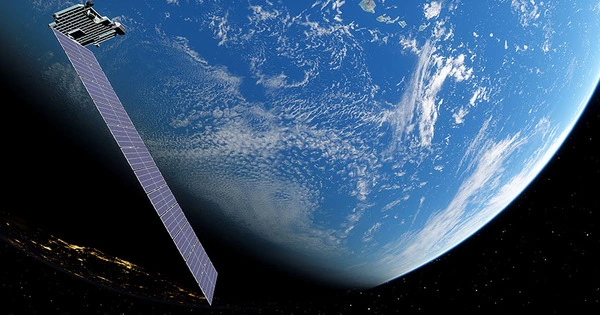In 2019, SpaceX launched the first 60 Starlink satellites. Since then, almost 2,000 have entered orbit, becoming part of a constellation of over 20,000. The project, known as Starlink, aspires to offer high-speed internet to every corner of the globe.
Elon Musk, the creator and CEO of SpaceX, presented the Starlink concept in January 2015, noting that the business planned to launch only approximately 4,000 broadband satellites into low-Earth orbit to deliver low-cost internet. To put this in context, there were only about 2,000 operational satellites in orbit prior to Starlink, and humanity has launched only about 9,000 craft into space throughout history.
Fast internet connections are currently only available in areas with fiber optic lines. Communications satellites give internet access in remote regions, but the connections are notoriously poor.
According to the European Space Agency, these satellites are in geostationary orbit, which means they travel at the same speed as the Earth’s rotation and hence remain positioned above the same spot on the ground (ESA). This makes it simple for receiving satellite dishes to connect with them, but it takes time to transfer data in this manner.
According to Starlink.com, SpaceX intends to change that by surrounding Earth with low-orbiting satellites. Individually, they will not cover as much of the Earth’s surface as needed, and they will not be geostationary. Therefore, thousands of them will be required to ensure complete coverage of the world. However, because they fly low, they will reduce the amount of time it takes for a signal to go from the ground to space and back.

It takes a lot of effort to do something like this. The greater the drag from the boundaries of the atmosphere, the closer a satellite is to Earth. To get around this, SpaceX has designed the satellites to resemble vertical shark fins, with a knife-like edge that cuts through the wind, according to its website.
Starlink Internet sends data into space, where it travels significantly quicker than fiber-optic cable and can reach far more people and places.
While most satellite internet services are now provided by single geostationary satellites orbiting the world at a distance of about 35,000 kilometers, Starlink is a constellation of numerous satellites orbiting the earth at a distance of around 550 kilometers, covering the whole globe.
Because Starlink satellites are in a low orbit, the round-trip data time between the user and the satellite – also known as latency – is significantly reduced compared to geostationary satellites. As a result, Starlink is able to provide services such as online gaming that are typically unavailable on other satellite broadband systems.
Each one weighs only 550 pounds (250 kilograms) and functions similarly to a router. Its only task is to receive signals, figure out where they’re going, and relay them. On the ground, users will have special dishes that will lock on to the closest satellite.
The project is not without its detractors. Each satellite has a solar array that resembles a wing. It catches the light at sunrise and sunset, making it glitter like a shooting star. As the constellation travels overhead, it forms streaks on telescope photographs, obscuring the stars and planets in the background. According to Space.com, Space X has been working with astronomers to limit the impact by shading and tilting the satellites to reduce the amount of light reflected back towards Earth.
According to Space.com, the high-profile project most likely to be impacted is the Vera Rubin Observatory, which is set to open in the Chilean Andes in October 2023. Because of its large field of vision and high sensitivity, this will be influenced by light satellite tracks.
As previously revealed by Live Science, the satellites may also pose a threat to other orbiting objects. According to Live Science, they are now responsible for more than half of all close encounters in Earth’s orbit, and that number is only expected to grow.
According to Space.com, after two near-misses with the China Space Station, the Chinese government filed a formal complaint with the United Nations in December 2021. With at least 11 other businesses currently in the satellite constellation competition, space is set to get increasingly intricate and crowded in the coming years.
To learn more about Starlink Internet’s ambitions, check out the satellite website at Starlink.com.





